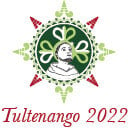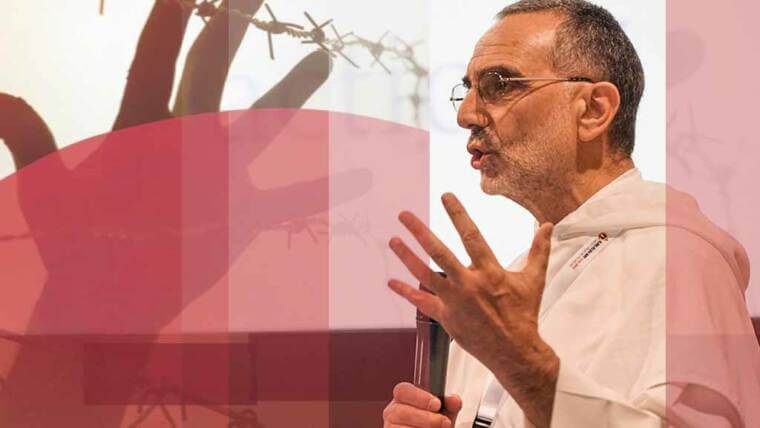The human and the talking machine

And yet it talks! That’s what Galileo might have said to the inquisitors of artificial intelligence, quick to criticize its lack of common sense, its hallucinations and its annoying tendency to draw on other people’s data to flesh out its discourse. Let’s face it: despite their limitations, the generative AI models championed by ChatGPT represent a major step forward in the history of AI. And this milestone is not, above all, technological: for the first time, we are faced with an instance capable of producing a truly coherent and plausible discourse, without being endowed with intelligence. And we have to admit: it’s confusing, because we spontaneously associate language with intelligence. “We think in a language”, we are wont to say, and parents watch with hope and apprehension for their offspring’s first words, which will bring them into the great family of humans. As a result, we have an unfortunate tendency to anthropomorphize this technology. It’s probably an echo of our habit of projecting our humanity onto any artifact, from the stuffed animals of our childhood. And generative AI lends itself so well to this that, even though it constantly warns us of its identity as a mere machine, millions of our contemporaries are trying to catch it at fault, asking it for advice or even asking existential questions.
Home protectors
It’s true that ChatGPT isn’t the first talking machine: despite having very little to say to each other, Alexa and Google Home have carved out a place for themselves in our daily lives, and their story casts generative AI in the light of real-life experience. We ask these AI-packed speakers about the weather, or ask them to perform minor services such as writing down the shopping list or reminding us of an appointment. In fact, more than an interlocutor, these connected speakers have gradually become the protectors of our homes. They’re like the lares, the domestic deities who once sat enthroned in the atrium of Roman villas. In those days, holes were made in the walls to allow the statuette to watch over the exits. In short, the first video surveillance system. But you had to believe. And, in the Hebrew tradition, many mocked, along with the psalmists, those false gods who “have mouths and do not speak, ears and do not hear”. However, if you ask Alexa for a pizza without pepperoni, thirty minutes later you’ll get it. Connected to the home automation system and our indispensable cell phones, these devices have become central. So much so that this digital technology, which is gradually weaving a protective cocoon around us, is creating a dependency far more formidable than screen addiction. It even exerts control over our lives.In fact, it exerts a kind of control over our lives that is, in my view, vastly underestimated. In the West, we see control as the fruit of coercion, hence the many dystopias that Hollywood is famous for. We also forget that other cultures view it through the prism of the game of Go: a gradual encirclement, without a blow being struck. Such is the control that technology exerts over our lives: discreet and comfortable, but very real. But if we can no longer do without it, is this technology – of which AI is the pinnacle – still at our service, or has it become our master? The question is both practical and symbolic. By consulting ChatGPT as if it were an oracle, we are perhaps indulging in the kind of magical thinking that our scientific and rational societies try in vain to eradicate. A whiff of shamanism that has been with us since the dawn of humanity. Almost invariable. Some people criticize the designers of generative AIs for giving them a voice. Shouldn’t they have made them simple text generators, with whom we would not have been able to converse? If, in a Promethean gesture, they have stolen AI from the knowers to share it with all humans, they have not turned it into a totem or a fetish. Remember the story of the golden calf. This piece of wisdom tells how, when Moses went to talk at length with God, the people took fright and had a statue made to protect them. Yet it wasn’t the goldsmiths who turned it into an idol, but the people who invested it with divine power. The responsibility is therefore in our own hands: will we allow ourselves to be comfortably dominated by algorithms that watch over our every desire? Will we delegate our day-to-day decisions to a virtual assistant, on the pretext of concentrating on the essentials? Or will we want to keep our agentivity intact and our ability to choose constantly exercised? What’s at stake here is nothing less than our ability to remain in control, and even, ultimately, our place at the top of the food chain, our status as the dominant species. There’s no need for the machine to consciously take over our lives and replace us. If AI can speak, it can also compose music and produce images of astonishing quality. “If you have a creative profession, you’ll never have to compete with artificial intelligence,” we heard not so long ago. Big deal! Beyond language and creativity, what else is the famous “human touch”? Lawyers, journalists, accountants, graphic designers and musicians could easily join the actors’ and scriptwriters’ strike currently paralyzing Hollywood, as everyone is likely to bear the brunt of this great replacement. What is at stake here, however, is not so much employment – the destruction and creation of which cannot be predicted with any certainty in a Schumpeterian process – but rather the risk of programmed, albeit involuntary, obsolescence of the human species.
The main issue
However, I think it’s important to put these developments in perspective with our recent history, and to remember the excitement that produced the arrival of photography. There was no longer any need for a painter, and it was possible to have a portrait taken in a matter of hours. Faced with this challenge to its virtual monopoly on the representation of reality, painting had to reinvent itself. The efflorescence of twentieth-century pictorial movements is perhaps no stranger to this challenge. Photography has also established itself as an art form in its own right. Similarly, there may soon be an art of “prompt” editing, whereby humans lead AIs to produce what they want.Socrates may have opposed the use of writing, but it’s a fact that humanity always comes out on top in the epistemological revolutions it triggers, and that we’re never stronger than when we’re challenged. Provided we organize ourselves to do so. And this is perhaps the main challenge we face, in the face of a technology that is both powerful and widespread. Democratization goes hand in hand with proliferation. Out of the laboratories, AI is now, at least in part, in the hands of the public. Unfortunately, the experience of social networks has shown us quite bluntly that, while we can only rejoice in everyone’s ability to express themselves publicly, not everyone uses this power with the same benevolence or the same discernment. . It’s a safe bet that the same will be true of generative AI. Without mentioning WormGPT, the chatbot designed to assist criminals, or the many uses already discovered by inventive hackers, we can mention the few attempts at deregulated generative AI. It is possible, for example, to ask them unfiltered how to dispose of a corpse or discreetly poison the neighbor’s children. The precision and creativity of the answers put Hitchcock in retirement!
This explains the need felt by ChatGPT’s designers to equip their creation with frameworks, which are regularly revised as the public manages to circumvent them. Even the LLaMA 2 model, which the Meta group offers in “open” mode, is not totally open source and retains its internal constraints, designed to limit misuse. And yet, part of the criticism levelled at these algorithms stems from the jealously guarded secrecy of their parameterization. I believe that this veil of secrecy is not only intended to make it more difficult to circumvent these safeguards, but also to prevent digital companies from being attacked from all sides to force or prevent this or that behavior. Some would find them too complacent or too restrictive. As always, the computerization of a process implies its objectivization: we can’t rely on a case-by-case approach; it’s 0 or 1. And to reach a consensus on the parameterization, we’d have to agree on the underlying values. We’re a long way from that, and in the absence of agreement, companies are left to their own devices. It’s an unsatisfactory situation, and one that can only be changed through a wide-ranging social debate. Forcing us to agree on the content of our language is perhaps the greatest contribution of the talking machine.

Br. Eric Salobir, OP
Chairman, Executive Committee of the Human Technology Foundation
Founder, OPTIC

Eric Salobir is a Dominican friar and Chairman of the Executive Committee of the Human Technology Foundation, as well as the founder of OPTIC, an international research and action network that places people at the heart of technology development. OPTIC brings together several thousand researchers, entrepreneurs and technology developers.






